What do nowadays children dream of? Probably playing in Real Madrid, win America’s got Talent or being dinosaur veterinarian. Not a clue, to be honest. I remember however what was mine: having my own coin-op arcade. Well, that and play in Real Betis, but I could only fulfil one.
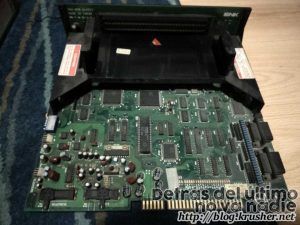
Unfortunately it wasn’t playing in Real Betis, given my abilities with the a football is the same as Kayne West with a violin: I don’t even know what to do with it. I could, however, get myself a NeoGeo MVS, the SNK arcade board. Very famous among anyone young in the 90s for it very high quality games and being the base of NeoGeo AES console, which shared hardware and games.
Well, having an arcade at home is a bit inaccurate, mostly because my flat has the size of an average service room. Instead, I’ve managed to get an apparatus to use these boards in a normal TV set, along with the cables and gadgets needed to play. These devices are generically known as Supergun, and I’m about to explain how to use one.
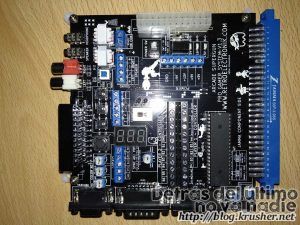
To begin with, arcade circuiot boards doesn’t have a connector to plug them to your mother’s TV, nor they have one to plug them to the mains power. How do they work, then? Most boards after mid ’80s use the JAMMA (Japanese Amusement Machine and Marketing Association) standard, which is supplied energy and controls and outputs analog video in RGBS format. Most european TV sets from mid 80s will admit this signal one way or another, via SCART or a VGA connector if it’s modern enough. Power supply is another thing, requiring both 12V and 5V, and sometimes even a -5V line.

In a real arcade cabinet a multifrequency monitor is needed along with a power supply with all these voltages, an awful lot of cables, coin slot device and switches an joysticks for the controls. With an appropriate cabinet, of course, everything covered in grime and fluff if possible. Needless to say that if you touch something you shouldn’t (the display, in particular) it can shock the heck out of you, so better leave it to professionals. (i.e. not like me)

Here is where Supergun comes into play. Instead of having a plethora of stripped filthy wires we can use more common appliances: a TV, a console controller and a ATX power supply, in the likes of a PC. They provide a nice button to “insert coin” and many other useful features. Some models would adapt to standar extensions, like the one NeoGeo uses (providing two additional buttons and stereo sound) or CPS2‘s. (that has a lot of buttons and stereo QSound)
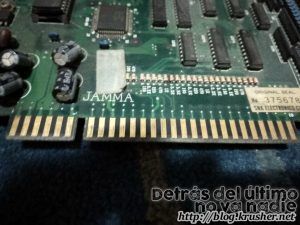
This Supergun in particular has some interesting features. First, it’s able to provide approximately one watt of a -5V line, needed for some old boards (apparently, NeoGeo doesn’t need it). It allows to adjust the video sync, along with the red, green and blue lines individually. It includes a voltmeter, to check in beforehand if the supplied voltages are appropriate. It comes with autofire too, but either it doesn’t properly work of I’m too silly to understand it. For the controller it uses two male DB15 in the likes of the NeoGeo and a female DB9 for the extra buttons, also known as “kick harness”.
Good thing we can use, through an adapter, a six-button Mega Drive controller, or other controllers for more common systems. The NeoGeo controllers are expensive as hell, so it’s a good alternative. It has also jack and RCA stereo connectors, so we can use some high speakers if we want.
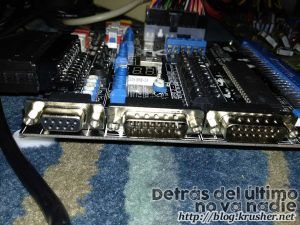
Most NeoGeo MVS models would allow to connect NeoGeo controllers directly. They look like standard DB15, but unfortunately they are “deeper”, so a common DB15 plug won’t work. Other SuperGun models will directly allow Mega Drive controllers, but sometimes supporting two buttons per player, three at most.
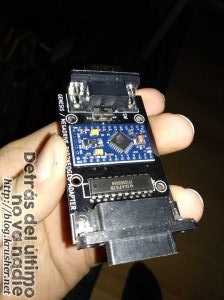
This Supergun model, along with controller adapters, can be found on eBay for example. Doing the appropriate query you can find many models and other similar devices. Some will come with some assembly required, others will come in a case… there are models to fulfill any desire. As usual, keep an eye on the seller’s reputation and read the advertisement correctly. The price is usually between 40 euros for a basic model to 70 for most complex. Sometimes you can find one in a case for around 100 euros, and some even with controllers and power supply for an arm and a leg.
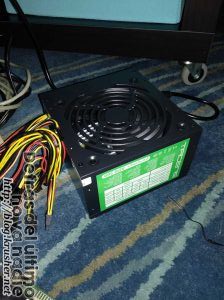
Other possibility is, of course, to build your own Supergun. It’s usually not worth the time, but of course hobbyist would like to try anyway, and connectors are not expensive. None of the signals are multiplexed, and no encoding is needed. Controls are registered (i.e. switch signals) when the precise pin is connected to ground, and they stop doing so when in high impedance. The RGBS signal can go directly to a TV set or a display via SCART, BNC or RCA connectors. Some will provide VGA, 31KHz output, so will be displayed nicely on a computer monitor.

Some old boards, in particular old Konami boards and most from early 80s would need an adapter because the connection is not an standard JAMMA. This would introduce a further layer to the setup, but it’s not the usual for non-antediluvian games.
One more thing: in my setup I use a SCART switch, but I don’t recommend doing so unless really necessary (for example when the cables won’t reach the back of the TV) as these switches usually add noise to the image. With this SCART connection we won’t usually get stereo sound, as the JAMMA standard is only in mono. Some boards, however, (like the NeoGeo) uses the negative audio signal for a second audio channel, something the Supergun must manage. Otherwise, the boards usually have a direct audio connection.
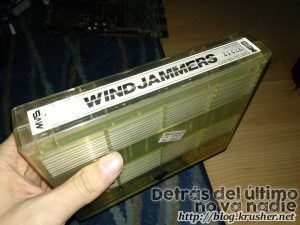
NeoGeo games come in two formats: MVS and AES. MVS are the arcade games, somewhat bigger, and AES are for the the home version, and are region locked. They don’t share the connection and it’s necessary an adapter to use it in a system they weren’t designed for, but technically are the same gadget and hold the same date. Ok, time to test everything.

Once everything is connected we can play already. This Supergun model has more lights than Las Vegas (Nevada, not Sevilla), noting that there’s voltage on lines 12V and 5V. There’s an “insert button”, since it’s something the controllers won’t have. Otherwise it would be a run for the arcade owner, doesn’t it?
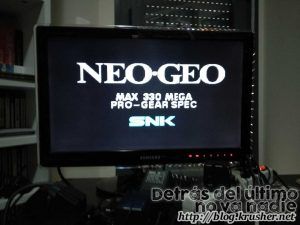
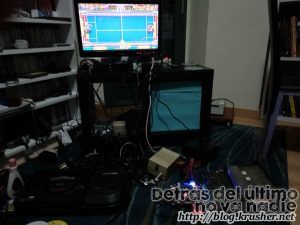
Now we can finally enjoy our games. An advantage that NeoGeo MVS offers against the home model is that, in spite that home model was cheaper back then, the MVS sold more and it’s easier and cheaper to find nowadays. It takes such a mess to set everything up, but we can use any arcade board we want with it. We can find a NeoGeo board for like 40 or 50 euros, and games ranges from 30 for the most common to a few hundred for the hardest to find.
I hope this article, describing my experience, can help somebody. In any case it must be noted that I don’t have any relation with the eBay sellers I make reference of, and I cannot be responsible of anything you buy or try to set up. Some links are sponsored, meaning they would give me a misery if somebody buys anything. If you are going to try anything described here at least follow your common sense: don’t touch with your filthy hands the connections, don’t play with electricity and take caution of not short-circuiting anything, as you can find yourself without your game. Or carpet.
Edit: It seems eBay doesn’t like my links so they have been removed.
